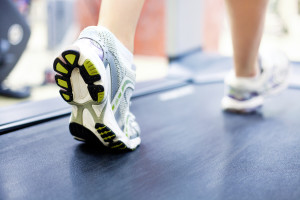What is Pulmonary Rehabilitation?
 Pulmonary rehab is a structured exercise program for patients with lung disease. The focus is on improving exercise capacity, muscle strength and education about proper breathing techniques and oxygen usage. These programs usually take place in the outpatient part of a hospital’s therapy department. Most programs meet two to three times a week for a couple of hours. Patients perform a variety of aerobic exercises and weight training. Patients are monitored by exercise physiologists and respiratory therapists.
Pulmonary rehab is a structured exercise program for patients with lung disease. The focus is on improving exercise capacity, muscle strength and education about proper breathing techniques and oxygen usage. These programs usually take place in the outpatient part of a hospital’s therapy department. Most programs meet two to three times a week for a couple of hours. Patients perform a variety of aerobic exercises and weight training. Patients are monitored by exercise physiologists and respiratory therapists.
Why exercise?
As idiopathic pulmonary fibrosis progresses over time, patients gradually reduce their activity level. This results in a slow deconditioning process that makes activity progressively harder. This feed-forward cycle eventually results in loss of muscle strength in the legs and arms. This reduction in muscle strength then further amplifies exercise limitation.
Can anything be done to break the cycle? Exercise can help. In studies that compare a group of patients that participated in structured exercise to a  group that did not, the exercising group had significant improvements in the distance they can walk in six minutes. In some studies patients also reported quality of life improvements.
group that did not, the exercising group had significant improvements in the distance they can walk in six minutes. In some studies patients also reported quality of life improvements.
Other benefits of exercise include confidence building and providing patients with a sense of community. Patients that require oxygen often are self-conscious and as a result tend to isolate themselves. Being in an environment where everyone is in the same boat can be very reassuring. Meeting other patients also can provide an important sense of community. Much like a support group, the comradery that develops provides further benefit.
Pulmonary Rehab and Lung Transplantation
All patients being considered for lung transplantation need to participate in pulmonary rehab. In order to optimize a patient’s post-transplant recovery they need to have enough muscle strength to participate in physical therapy. Pre-transplant pulmonary rehab begins the process of post-transplant reconditioning. Patients also benefit from seeing other patients on the waiting list for lung transplantation as well as patients who have already received their transplantation.